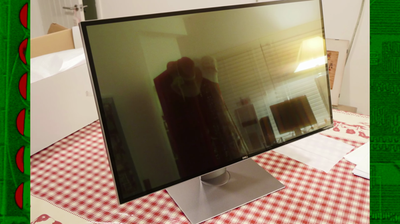
Using an 8K monitor for gaming and daily work (number crunching): my experience with the Dell Ultrasharp (2024)
My experience using a Dell UltraSharp 8K monitor for daily work crunching numbers and occasional gaming.
Introduction
Half a year ago I bought an 8K monitor (coming from a 4K monitor), the Dell Ultrasharp. I wanted to see if the switch to 8K would be noticeable in my day-to-day work (number crunching) and occasonal gaming. For both it has been an amazing monitor: I further elaborate on this below (as well as highlighting some cons of the monitor).
Some photos (click to enlarge)
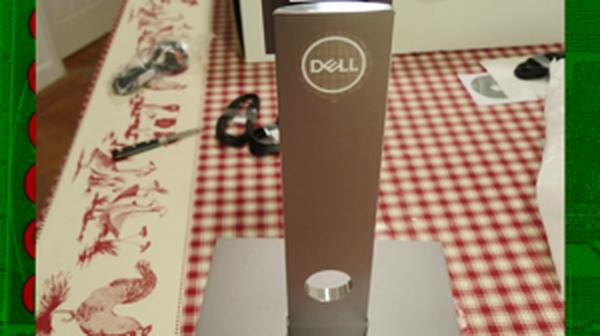

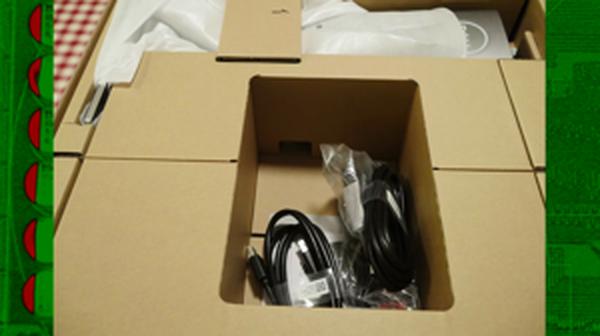
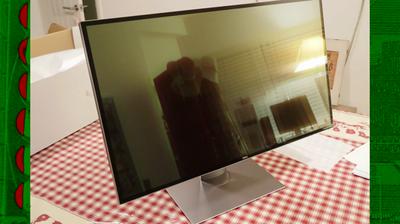
Specs of the Dell Ultrasharp 32 8K Monitor
- Release Year
- Brand
- Display Resolution Maximum
- Screen Size
- Product Code
- Refresh Rate
Prices
Visual Feast: The Unprecedented Clarity of 8K
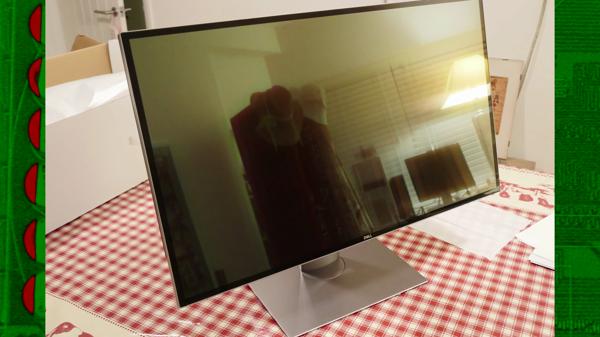
The sharpness of the Dell Ultrasharp is of a magnitude that I previously could only dream of when working with high resolutions:
Detail: Individual pixels are now indistinguishable, making icons and text extraordinarily sharp.
Color Accuracy: The color gamut coverage hits the industry standards right out of the box. A blessing for my photo editing workflows.
8K Content: While still sparse, the content that's available is mind-blowing, hinting at the potential this technology holds.
However, I have some reservations. The very features that define its excellence are also those that make it niche. The 8K resolution is ahead of its time, which means most applications and content can't fully leverage it yet. This is a monitor that's reaching far into the future – a bit too far for the current state of compatible content and the necessary hardware to run it smoothly.
The lack of 8K content stands out starkly; it's a bit like owning a Ferrari without a racetrack. Yes, professional needs for such resolution in photo and video editing are undeniable, and in these domains, it’s nothing short of a revolution. Yet for the average user, it's like having a toolbox that you can only open halfway – you know there's potential, but you’re only getting a taste.
Moreover, be prepared for the heat generated by such a pixel-dense screen, and note the restrictions on connectivity options – as standard HDMI or older graphics cards just won't cut it. These are details often overlooked until you face them head-on, and they represent the growing pains of early adoption.
Despite these drawbacks, it’s tough not to be enticed by the UltraSharp’s capabilities. For those like me, who are early adopters with a penchant for the razor-sharp detail that only an 8K monitor can provide, the trade-offs seem manageable — if not entirely forgettable in the face of such a visual feast.
So while my rational side keeps reminding me of the practicalities, my enthusiast heart can't help but be thrilled by the sheer clarity and color fidelity. This isn’t just a step up from 4K – it’s a giant leap, and one that changes your perception of digital imagery. For the here and now, the Dell UltraSharp is a glimpse into the future we can savor from the comfort of our desks.
Performance and Productivity in Professional Tasks

In the realm of professional tasks where detail and color accuracy are paramount, the Dell UltraSharp UP3218 8K monitor is quite the powerhouse. I've been using it primarily for photo editing and CAD work, and the sheer real estate of pixels adds a level of detail that makes a significant difference.
Here's my rundown of what I find impactful:
Color accuracy is spot-on right out of the box, thanks to the Dell PremierColor. Images look vibrant and true to life, a must for my photo editing gigs.
The 8K resolution has been a game-changer in CAD. I can view intricate schematics without constantly zooming and panning, which makes for a more efficient workflow.
From an ergonomics perspective, this monitor doesn't disappoint. It's adjustable for any desk setup, and the ability to switch between landscape and portrait is a nice touch for my varied projects.
Now, it isn't all sunshine and rainbows. There are drawbacks that might make you reconsider:
Cost is a big one. It's a serious investment, and the benefits need to outweigh this for you.
I've noticed screen burn-in after lengthy sessions with static images. This is a bummer when you're paying top dollar.
You'll need a pretty robust setup in terms of hardware. My graphics card gets a real workout driving all those pixels, and not everybody's ready to upgrade.
Despite these issues, the monitor's performance for professional tasks has been exceptional. I appreciate the attention to detail that Dell put into the design, making it user-friendly and a visually pleasing addition to my workspace. Even the lack of HDMI ports isn't a deal-breaker when you understand the limitations other connections would impose on performance.
There's also something to be said for being forward-thinking and future-proofing your tech. Sure, there's not as much 8K content right now, and maybe it's overkill for daily tasks, but when it's needed, it stands out in spades. The joy of seeing an 8K video for the first time on this monitor was a clear sign that tech is marching forward, and the UP3218 lets you lead the parade.
What's clear to me is that the Dell UltraSharp 8K monitor is a bridge to the future of high-resolution professional work. For photographers, video editors, and design professionals, the quality and productivity benefits could very well justify the investment. For the everyday consumer? Perhaps not just yet, but it's exciting to get a glimpse of what's to come in display technology.
Gaming at the Pinnacle: An 8K Odyssey

Embarking on an 8K gaming odyssey seems almost indulgent, given that we've only just gotten comfortable with 4K as the high-standard. But as someone constantly seeking the cutting edge, the Dell UltraSharp UP3218K beckoned me into uncharted territory.
Let’s break it down:
Pros:
Unmatched Resolution: Seriously, you can't beat 8K. Even if it's overkill, the level of detail is jaw-dropping. It's impossible not to appreciate the nuanced visuals, especially if you adore graphics as much as I do.
Color Accuracy: For someone who also dabbles in photo editing, the color fidelity is a godsend. You're getting a monitor that does double duty for work and play.
Future-Proofing: With this display, I'm already where technology is headed. That's a comforting thought.
Cons:
Content Scarcity: The reality is, there's not much 8K content out there—games included. It's a bit like owning a Ferrari in a world without highways.
Hardware Requirements: To push those pixels, you need serious horsepower. My rig is no slouch, but it's definitely sweating trying to keep up.
Heat: The monitor can get warm, which is concerning for marathon sessions, though it hasn’t affected performance yet.
In the realm of play, I ventured into the few 8K-ready games. Wolfenstein II in 8K? An experience like no other — but let's not ignore the elephant in the room: achieving a playable framerate at this resolution is a Herculean task. Sure, the Titan Xp gets close, but it’s not quite there for most modern titles without some graphical compromises.
I can’t help but appreciate the ambition; it’s like staring through a window into a hyper-detailed alternate reality. Yet, I'm also acutely aware of how this tech is in its infancy for gaming.
The high DPI is something I never knew I needed until I saw it in person. It’s particularly noticeable when you're up close and personal with the action on screen. First-person titles benefit the most, with environments appearing almost tangible—sans the need for VR headsets.
Heat is a concern. The UP3218K gets notably warm, even when you're not pushing the latest AAA titles at their max settings. This worries me a bit for the monitor's longevity, but time will tell.
At the end of the day, the Dell UP3218K feels like a sneak peek. It's overpowered for gaming right now, but that's part of its charm. It's not a purchase I can recommend to every gamer—those for whom practicality rules the wallet. But if you're someone who yearns to be at the forefront and has the rig (and the wallet) to handle it, gaming on this 8K behemoth is a surreal experience that boldly defines the cutting edge.
Weighing the Worth: The Cost of 8K Against Emerging Alternatives

As someone living with an 8K monitor on my desk, I've had a fair share of 'wow' moments. The Dell UltraSharp 8K is like a window into the future, where every pixel fights for your attention with its sheer clarity. However, let's get real; with such cutting-edge tech, there's always a debate about whether the investment is worth it, especially when 4K screens are getting increasingly affordable. Here's my breakdown:
Pros:
The resolution is top-of-the-line, with visuals so sharp that they make other displays look blurry by comparison.
Color accuracy is on point, a dream for professionals in photography and design.
It's truly future-proof, buying you some time before the next big thing comes along.
Cons:
The cost is steep, and the improvements over 4K can feel incremental unless you're using it for high-end professional work.
8K content is scarce, to the point where you might not use the monitor to its full potential on a daily basis.
There are some kinks, like the oddities when running games or the occasional driver issues with graphics cards.
So here's the deal: the Dell UltraSharp 8K's breathtaking resolution has spoiled me for anything less when it comes to detailed work, like editing high-res photos or scrutinizing design layouts. The clarity is undeniable, and there's a particular joy in seeing your work in the best possible light—literally.
That said, the price makes me wince a bit. Plunking down thousands for this bad boy means I'm forgoing upgrades in other parts of my tech ecosystem. And let's not forget the struggles with early adoption: from waiting on 8K to hit mainstream to ensuring my other hardware keeps pace with this behemoth's needs.
As we reach the tail end of this 8K journey, my thoughts keep coming back to balance. Do I get the thrill of a clear, crisp image every morning? Yes. Does the price tag make my wallet cry out for mercy? Also yes. It's a luxurious piece of tech that's probably overkilling for most casual users, but for professionals who demand pixel-perfect precision, it's a game-changer.
In the meantime, for gamers and casual users, the allure of 4K may still hold sway, offering a sweet spot of quality, functionality, and affordability. Until 8K becomes more accessible and practical for a wider audience, I'm simply enjoying my privileged view from the cutting edge—it's quite the sight to behold.
Comments (0)
Share